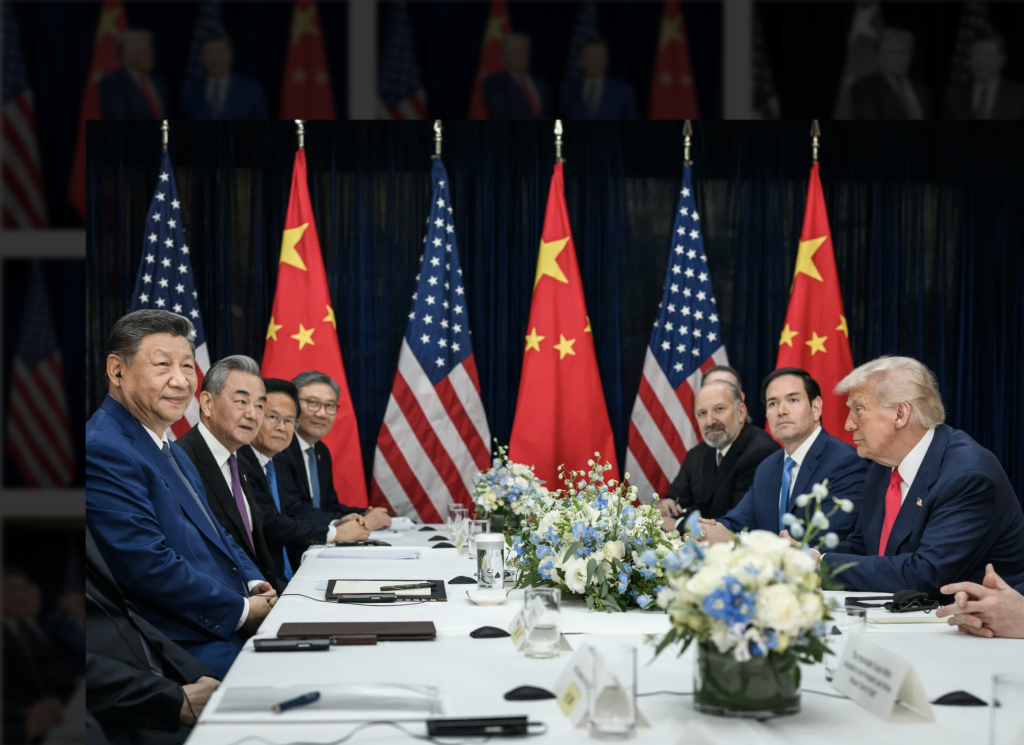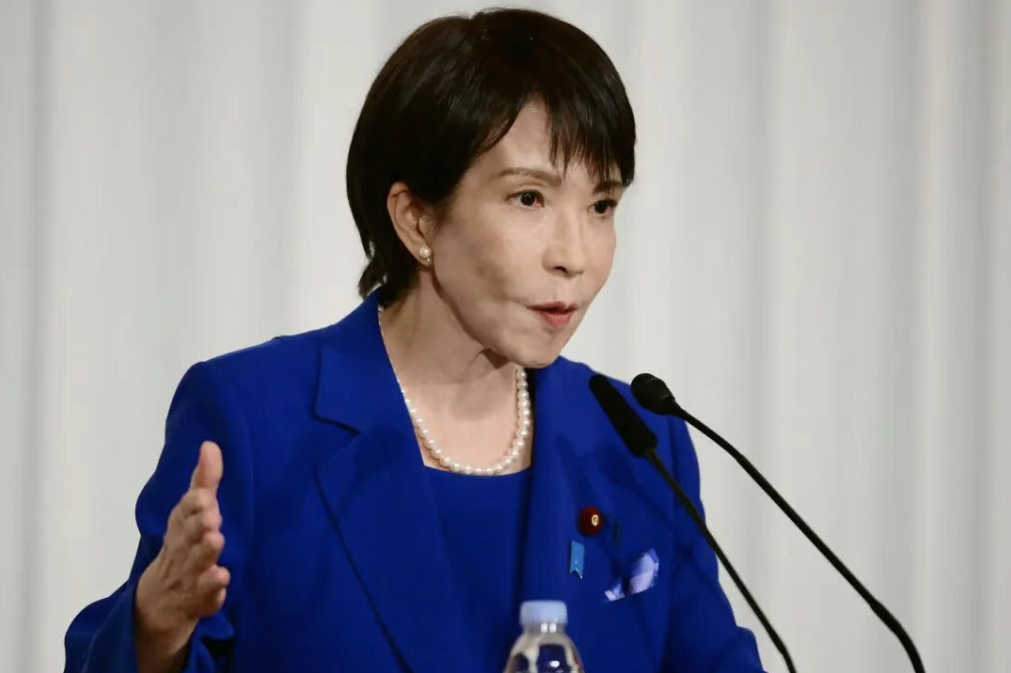In Call With Trump, Xi Says Taiwan Issue Extends Beyond China’s Internal Affairs
Playboy Is Ditching the Sex and Betting on China
When the March-April edition of Playboy hit newsstands on Feb. 12, it was the first without the nude centerfolds that made it famous — a move widely attributed to the company’s renewed focus on China, where pornography, and Playboy magazine, is strictly illegal. “We want to expand to a younger demographic in China,” Playboy’s global licensing head, Matt Nordby, explained when the company signed a 10-year partnership there last May; the decision to jettison the genitalia came just five months later.
Not that many of its American readers care much. The Internet, after all, rendered Playboy’s adult content tame and irrelevant years ago: “You’re now one click away from every sex act imaginable,” Scott Flanders, the CEO of the magazine’s parent company, Playboy Enterprises, told the New York Times. And as far as its vulpine, octogenarian editor in chief, Hugh Hefner, was concerned, his life’s work was done. Hef had helped make pornography more mainstream than he could possibly have hoped — he’d made it free.
His next goal seems to be making the brand respectable. But while Americans may finally be reading Playboy for the articles, the magazine isn’t even available in China (though its newly safe-for-work site, Playboy.com, is). Instead, Playboy Enterprises makes roughly 40 percent of its revenue — more than $500 million in 2014 — from the world’s most populous nation by licensing its logo for use on products: cosmetics, fragrances, lingerie, sportswear, fashion accessories, luggage, and so on. As a result, the company claims, its Playboy Bunny is among the most recognized symbols in the world, along with Nike’s swoosh. The market research firm Penn Schoen Berland found that Playboy has 97 percent name recognition with Chinese customers, according to a 2015 Wall Street Journal story. And the bunny ranked higher in brand recognition in China than Cartier, Louis Vuitton, and Christian Dior, according a 2002 story in the now defunct magazine Far Eastern Economic Review.
But while the fashion houses Playboy claims to outmatch in recognition front major malls in China, their giant marquees looming over shoppers, the bunny is rarely seen in such august surroundings. That Playboy’s growth seems unaffected by the luxury slowdown, precipitated by a widespread government crackdown on corruption and a weakening economy, probably speaks more to its own positioning than to any particular durability or favor among Chinese buyers. (Playboy did not respond to repeated requests for comment.)
In 2013, Playboy’s chief marketing officer, Kristin Patrick, described the strategy as “Less sweatsuit, more Tom Ford.” And yet, Playboy’s enduring image in China is just the opposite: Grandmothers proudly wear their velour tracksuits, and the iconic bunny ears often adorn children’s T-shirts. Meticulously neutered of any association with the racy or illicit, a bottle of Playboy perfume is more likely to be gifted by a thrifty student than favored by a city socialite; one Shanghai fashion editor told me she “never paid them any attention.” In his book Strange Stones, journalist Peter Hessler describes being stalked at a seaside nursing home in 2002 by a typical Playboy customer: a plainclothes cop wearing “fake Izod shirt and black leather loafers that featured the Playboy logo. He had bad skin.” My first encounter was around a decade later, at a squalid business club in Dongguan, a city known for its textile and prostitution industries, where I traced an overpowering odor to a pair of grubby white socks hardening in the sauna, the fading rabbit ears every bit as sexy as their owner.
Since entering the Chinese market nearly three decades ago, Playboy Enterprises has worked hard to remove any hint of salaciousness from the brand. It emphasizes its original underpinnings as an arbiter of leisure and lifestyle, without so much as a nipple slip. The ruling Chinese Communist Party had long banned pornography in China, so Playboy focused instead on selling consumer goods. It first came to the mainland not through smuggled magazines or videos — though these were certainly circulated among the well-connected — but a 1988 licensing agreement with Hong Kong’s Chaifa Group, chaired by the prominent businessman John Chan Chun Tung. Licenses for Playboy’s fashion brand were divided in the early 1990s into multiple sub-categories, like leather goods and sportswear, and sold to various mainland manufacturers.
Throughout the 1990s, Playboy battled, only partially successfully, against any association of its name with the kind of Western “vulgarity” Beijing has long condemned. (“I think of a man who has a deficit in morals,” a student at its sole Beijing store, long closed, told the Chicago Tribune in 1997. “From what I’ve read in books, Playboy is a bad thing.”) The company downplayed the literal translation of its name, “Flower Flower Prince,” promoting slogans that instead emphasized a rounded lifestyle, such as “The Playboy man is multifaceted, placing importance on affairs of the mind and of the heart.”
That strategy seemed to work: In 1996, sales of $70 million from China made up nearly a quarter of Playboy’s global income. But the following year’s Asian financial crisis took a toll: As demand slumped during the recession, Chaifa was forced to discount stock deeply, undermining the “sophisticate” image supposedly at the core of the brand.
Playboy took advantage of the Year of the Rabbit in 1999 to deploy Christie Hefner — Hef’s daughter, who succeeded her father as CEO in 1988 — to meet local Chinese officials and retailers, and shift the focus back to sophistication. By 2003, Playboy claimed roughly 650 retail outlets and several mainland stores, and was boasting of its superior name recognition. “This was mainly because of its faux status as a foreign brand, which helped it enter certain distribution channels,” explained a former sales agent who requested anonymity as he still works in the business. Large Chinese supermarkets and department stores favor foreign brands because they raise pricing levels, pay higher rents than domestic brands, and attract customers. But “because it’s usually incredibly difficult for them to attract real, A-list international brands,” the former agent said. Brands like “Playboy fill the gap.”
It’s a well-worn model for American brands overseas, especially those without much reputation for fashion. Products bearing logos like Camel, Jeep, Marlboro, and Playboy have long been common in Chinese department stores, where they are afforded Western prestige and sold at an overseas premium, despite being designed and produced domestically. Selling local goods with “foreign appearances,” a 2013 report in the Chinese newspaper 21st Century Business Herald concluded, was a “booming” industry in China’s less-developed cities.
As for why people would choose to buy Playboy over, say, Jeep? Distribution. According to the ex-agent, the company relies on market presence as the crucial factor in its retail strategy. Customers buy it because it’s there; rivals, meanwhile, churn out Playboy knock-offs. In 2006, Playboy sued three companies for copyright infringement — though this was more a symbolic flail at a Hydra than a significant blow. Due to Playboy’s early success, “Many small workshops began to manufacture the fake T-shirts, still with a bunny logo but at a much cheaper price,” Derek Dong, an account director at research firm Millward Brown, told the China Daily newspaper last May. (In 2011, one blogger documented an entire fake store, complete with an inverted Playboy logo, in an obscure resort town in Fujian.)
The combination of a nominally foreign brand selling Chinese-made clothing, alongside local firms whose inexpensive knock-offs barely differed in quality, would degrade Playboy’s status throughout the late 1990s and 2000s, from indecent to innocent to merely innocuous. Not that customers would notice: “Buyers are typically less educated and lower- to middle-level income people” in second- or third-tier cities, the former agent said, referring to China’s custom of ranking cities according to their economic status and development. “The better-educated crowd are well aware of Playboy being a ‘fake foreign’ brand and avoid it.”
And yet, while Playboy’s prestige may have been dwindling, its profits did not. “This is a company that probably would have gone under years ago if it weren’t for merchandising,” said Susan Gunelius, CEO of the marketing firm KeySplash Creative and author of the 2009 book Building Brand Value the Playboy Way. “China is one of the things that Playboy did right in the past 20 years, but whether that was by design or by accident is unknown.”
Attempts to class things up in China, though, usually backfired: Consider, for example, Hef’s grand 2004 declaration that “the bunny is back” in China, followed by a move to open Playboy Clubs there. He partnered with a Shanghai company to open a multistory entertainment complex aimed at the “successful wealthy Chinese customer in his 30s and 40s,” with three restaurants, a disco, a spa, wine bar, and cigar lounge — another licensing deal, with Playboy predicting profits of several million dollars in the first year alone.
After being snubbed in a city once commonly known as the Whore of the Orient, Playboy waited until 2010 for its next big China move, the lavish Playboy Club Macau, billed as a VIP experience overlooking the skyline of the Chinese-run gambling enclave. It would be another throwback to the golden years, this time to the Playboy Club and Casino in Park Lane, London, which opened in 1966, and soaked up so much oil money from Arab whales that the casino’s profits covered the operating losses of all Playboy’s other interests, and then some: up to $80 million a year. Hef’s London club lasted 15 years before losing its gaming license; Playboy Club Macau closed quietly after just three unremarkable years in business.
Playboy’s current CEO Flanders had overseen the Macau venture a year after taking the helm, but he’d arrived to a company about to go under. “We saw ourselves … as this powerful global media company,” Flanders told the magazine Entrepreneur in 2014, five years later. “But our businesses, each one of them, was weaker than the next.” Playboy Enterprises has now settled into what works, being a brand-management company that happens to sell magazines. In 2014, Playboy ranked 58th in a survey of the world’s top 150 licensors. And last May, the company signed a 10-year licensing agreement with the company Handong United, lauding the deal as “enhancing our licensing portfolio with longterm, brand-enhancing partners.” Like Chaifa, Handong appears to have little presence prior to the Playboy deal (it was only incorporated in March 2015), so its partnership value — particularly to what Gunelius described as Playboy’s “key” market, young consumers — remains to be seen.
Certainly, there’s little hope for introducing the swank Playboy Clubs; the moral and regulatory environment in China is even more severe than during the first bungled attempt in 2004. Besides, young fashion-conscious urbanites today — the middle- to high-end consumers of tomorrow — are growing far less interested in “loud” brands like Playboy, and are more inclined to favor discrete, boutique labels and clubs, both domestic and foreign. Today, would-be Chinese customers can only visit the Play Boy Club, which opened just north of a Gucci store in downtown Shanghai, shortly after the magazine renounced nudity. Described by a reviewer as possessing a “dark tackiness” with “pure 5th-tier club vibes,” the distinctly Chinese experience may be a knock-off of the overseas original — but it eerily captures the brand.
By ROBERT FOYLE HUNWICK Feb. 15, 2016 on Foreign Policy
Read more here








